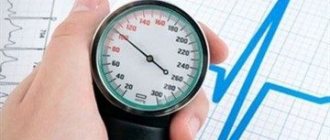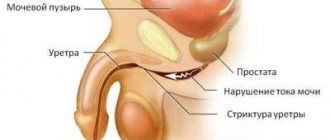To understand how you can influence the course of renal hypertension and reduce renal pressure, you need to understand some concepts. Renal hypertension refers to secondary (that is, occurring against the background of other diseases) hypertension. High blood pressure may bother a patient with the following kidney diseases:
- Inflammatory processes in the kidneys - pyelonephritis, glomerulonephritis.
- Congenital anomalies of the kidney and urinary tract - polycystic kidney disease, hydronephrosis, kidney dystopia, and so on.
- Pathological processes of the kidneys against the background of systemic diseases - lupus erythematosus, vasculitis.
- Diabetes mellitus affecting the microcirculatory system of the kidneys.
- Tumors of the kidneys and urinary tract, large kidney stones.
- Pathology, congenital or acquired (atherosclerosis) of the kidney vessels - narrowing of the renal arteries. This type of renal hypertension is called “vasorenal hypertension.”
Treatment with folk remedies
First of all, in order to eliminate the cause of kidney pressure and cure the disease that causes it, it is necessary:
- Consult a nephrologist.
- Take special herbal teas.
- Stick to a salt-free diet.
- Drink plenty of purified water.
For effective treatment, comprehensive measures must be used. But all methods used must be under the supervision of a specialist. Traditional recipes can be used together with medications.
If it is definitely established that renal pressure causes pyelonephritis, then it is reduced with the help of herbal infusion:
- Bearberry, lingonberry, calamus roots, elecampane and marshmallow are taken. All components are thoroughly crushed and mixed together.
- The resulting dry mixture is poured with hot water (approximately 90 ° C). The poured mixture is infused for half a day. It is advisable that the container in which the mixture will be infused is dense and airtight. A thermos is best suited for this.
- The infusion must be taken for two weeks (before meals).
A decoction is also ideal for the kidneys:
- Yarrow inflorescences, nettle leaves, buckthorn bark are finely crushed and mixed.
- The collection is poured with boiled water and infused for about 30 minutes.
- Golden mustache juice is added to the finished infusion.
- It is recommended to be treated with this infusion for at least three weeks, using it before bed.
In addition to medicinal herbs, a patient with kidney problems is advised to monitor his diet. Eliminate salt and spices from food. It is advisable to eat everything boiled, lean or steamed in a double boiler.
Drug therapy
Before starting to look for the cause of kidney pressure, doctors make a preliminary diagnosis of hypertension. If prescribed medications do not help, specialists look for the cause in the kidneys. In order for treatment to be effective, drug therapy should be used together with medicinal preparations.
Many experts believe that the medical treatment process is harmoniously combined with herbal medicines or herbs. Usually alternate these two methods every ten days. Effectiveness in the treatment of various kidney diseases can be achieved only after a few months.
In order not only to achieve a positive result, but also to quickly eliminate the main causes of the emerging pathology, joint monitoring of the patient by a therapist and a urologist is recommended. The therapist reduces the resulting pressure, and the urologist eliminates the main factors that led to subsequent kidney problems.
The main treatment depends on the type of disease. If the cause of the pressure is a benign formation, a cyst, then with timely surgical intervention all consequences can be eliminated immediately.
If the cause of the disease is inflammatory processes caused by bacteria, then the urologist prescribes gatifloxacin or cefritriaxone. But such drugs are used only with the permission of a doctor, as they have a strong toxic effect.
Another direction of therapeutic treatment is to reduce blood pressure. Such treatment is carried out with any antihypertensive drugs. Fosinopril, enalapril and captopril fall into this category. These medications are prescribed by a therapist. They can only be purchased with a prescription. Medicines in this category are taken until the blood pressure stabilizes.
Nutritional Features
Many patients have a natural question: how to reduce kidney pressure at home?
In addition to treatment with drugs and herbal teas, it is necessary to develop a diet and physical activity.
With high blood pressure, the patient’s attention is always paid to his diet. Your daily diet should not contain salt, fried foods, or hot spicy dishes. Spices can raise blood pressure and negatively affect normal kidney function. If you have kidney problems, experts strongly recommend avoiding drinks such as tea and coffee. You should also not drink alcoholic cocktails or liqueurs.
If we talk about physical activity, a little exercise in the morning is very important. But severe overwork and heavy lifting are strictly prohibited. Excessive loads lead to increased vascular tone, and the pressure does not normalize, but increases even more.
There is a category of products that the body needs for kidney pressure:
- By eating a little seaweed a day, you can saturate your body with minerals.
- Berries that grow in the north of the country, such as lingonberries and cranberries, have a lot of positive properties that are useful not only for the kidneys.
- Fish oil or fish high in omega-3 acids helps the body acquire essential micronutrients.
- Eating onions and garlic helps reduce blood pressure, kills germs, protects the body and restores immunity.
- Fresh juices from vegetables, celery roots, parsley, cilantro, dill prevent the formation of kidney stones and saturate the body with essential vitamins.
Useful video
How to reduce kidney pressure at home:
Strictly following the doctor’s recommendations for taking medications, giving up bad habits and a special diet will help preserve the disease for a long time and normalize blood pressure without surgery.
However, without eliminating the cause of renal hypertension, it is impossible to be completely cured, so the most effective method is to carry out the recommended surgical intervention.
- Eliminates the causes of pressure disorders
- Normalizes blood pressure within 10 minutes after administration
Increased renal pressure should become an alarming factor: the disease occurs against the background of an already existing dangerous pathology - arterial hypertension. It is impossible to determine the reason for the appearance of threatening numbers on the tonometer on your own; you should seek help from specialists. If antihypertensive drugs taken in handfuls help only for a short time or do not bring relief at all, then the doctor will definitely suspect renal hypertension in the patient.
How to determine the disease?
When pressure appears, it is quite difficult to immediately determine that it is renal hypertension. In most cases, heart disease has very similar symptoms to kidney pressure. The only sign that the patient can notice himself is tissue swelling. All others can be determined only by tests and after an ultrasound examination.
The specialist may also prescribe additional examination on a computed tomograph, angiography.
Only after a comprehensive examination can you accurately diagnose and find the cause that causes kidney pressure.
You should always consult a doctor at the slightest discomfort. A self-diagnosis can lead to irreversible consequences.
High blood pressure occurs in many people over the age of 40. Most often, primary arterial hypertension occurs - a well-known hypertension disease, but secondary hypertension is also diagnosed, which develops against the background of severe pathology of the kidneys, endocrine, cardiac and nervous systems. Renal hypertension develops at any age and is characterized by high blood pressure and resistance to treatment. It is important for a hypertensive person to know, if renal pressure is increased, how to reduce it using available medications and folk methods. This will be discussed in this article.
Reasons for development
Increased renal pressure is the result of a malfunction of the organ. Among the causes of increased renal pressure:
- renal failure;
- renal artery aneurysm;
- kidney tissue diseases (pyelonephritis, kidney tuberculosis);
- malignant and benign neoplasms in the kidneys.
High renal pressure occurs due to pathologies of the kidneys or their arteries
Separately, high renal blood pressure is distinguished in diabetics, which is caused by changes in the vessels of the organ against the background of increased levels of glucose in the blood.
When measuring blood pressure, both tonometer values should be taken into account. It is believed that the upper pressure is renal, and the lower is cardiac. Thus, with renal hypertension, only the upper or systolic reading may increase, while the lower pressure will remain within normal limits.
Thus, among the reasons for increased renal pressure are any disturbances in the functioning of this organ. The exact cause of the disorder should be identified in order to know how to reduce renal pressure.
Tags: blood pressure, low, kidney
About the author: admin4ik
« Previous entry
What is renal hypertension
The kidney tissue contains arteries of various sizes, through which almost 2 thousand liters of blood circulate daily. If for any reason there is a disturbance in the inflow or outflow of blood through the renal arterial vessels, organ ischemia occurs.
Lack of blood flow activates the production of renin, a special substance produced by the kidneys. It triggers a cascade of reactions that results in the formation of the hormone angiotensin. This substance has a powerful vasoconstrictor effect - due to this effect, vascular resistance increases, which causes an increase in pressure in the arteries.
Renal hypertension is a secondary phenomenon that develops due to any congenital or acquired kidney disease, as a result of which the functioning of the organ is impaired and an increase in blood pressure occurs.
Causes that impair kidney function may include:
- anomalies in the structure of organs;
- renal artery stenosis;
- compression of blood vessels by a tumor or hematoma;
- glomerulonephritis;
- pyelonephritis;
- diabetic nephropathy;
- urolithiasis disease.
Renal hypertension is characterized by high rates - the tonometer records blood pressure figures from 140/90 mm Hg. Art., with an increase in diastolic pressure. Drug therapy prescribed for renal hypertension in many cases does not give the expected effect.
Treatment of renal hypertension
It is recommended to treat nephropathy comprehensively; it is necessary to establish the cause of the increase in pressure, eliminate it, and relieve the symptoms. Renal hypertension - treatment can be carried out with medications (tablets, injections of solutions, etc.), folk remedies or through surgery. The last option is a last resort measure, which is necessary for congenital defects or stenosis of the renal arteries. As a rule, balloon angioplasty or phonation for renal hypertension is performed.
- Comfortable sea water temperature for swimming children and adults
- What is vitamin E useful for in capsules? Beneficial properties of vitamin E for women and men
- Hair polishing machine - how to choose. Hair polishing with a machine in the salon and at home
Drug treatment
How to reduce kidney pressure using tablets must be determined by your doctor. It is not always possible to reduce indicators to the desired level quickly. After prescribing the medication, you should contact your doctor again within a month for a possible dose adjustment or therapy program.
In cardiology, two schemes are used to treat renal pressure: monotherapy or combination treatment with two or three antihypertensive drugs.
The selection of the drug and its dosage takes at least two weeks - during this time the patient must remain under the supervision of the attending physician.
The following groups of drugs are used in the treatment of arterial hypertension:
- diuretics – diuretics that remove excess fluid from the body;
- blockers of slow calcium channels - Ca antagonists effectively relax vascular smooth muscles;
- ACE inhibitors (angiotensin-converting enzyme) - block the production of angiotensin;
- beta-blockers - reduce cardiac output, relieve arterial spasm and inhibit the release of renin;
- agonists of imidazoline receptors - reduce the tone of the autonomic nervous system.
When choosing a medicine for blood pressure, the level of its indicators, concomitant pathology and the presence of target organ damage are taken into account. So, with high renal pressure, which is accompanied by increased heart rate, beta-blockers (Locren, Propranolol, Biprol, Atenolol) or calcium antagonists - Verapamil or Isoptin - are used.
If an episode of hypertension occurs without arrhythmia or is accompanied by tachycardia, then it is optimal to use slow calcium channel blockers (Diltiazem, Nifecard, Felodip, Verapamil).
To influence the immediate cause of renal hypertension (excessive production of renin), ACE inhibitors (Amprilan, Fosicard, Enalapril, Perineva) are used.
Reducing blood pressure at home
It is possible to reduce kidney pressure at home by using old and well-known traditional medicine recipes. But do not forget that renal hypertension is a secondary pathology and requires serious drug treatment.
Traditional medicine
Traditional recipes are accessible and easy to use - in case of renal hypertension, they can be used as auxiliary methods for correcting blood pressure. Despite the fact that herbal remedies have virtually no side effects, the use of any of them requires mandatory consultation with a doctor, who will tell you how to treat hypertension with medicinal herbs.
Popular recipes for reducing blood pressure at home are as follows. An infusion of staminate orthosiphon, calendula flowers, woolly erva, birch and sage leaves, taken in equal parts. Take 2 tbsp. spoons of the mixture and pour 0.5 liters of boiling water. After the infusion has stood for 1 hour under the lid, it should be strained. It is taken 100 ml every 2 hours hot.
Another recipe is an infusion of dill seeds. The raw materials should be thoroughly ground into powder (in a mortar, using a blender or coffee grinder). Pour 5 tbsp into an enamel container. spoons of prepared powder, pour 1 cup of boiling water. The solution is infused for 3 hours. The finished product is used 4 times a day, 2 tbsp. spoons.
In addition, you can prepare an infusion from 50 g of dried red grape leaves, which are filled with hot water in a volume of 1 liter. Leave the product covered for 4 hours. Drink 1/2 glass 3 times during the day.
Alcohol tinctures of various medicinal herbs are used to treat hypertension. But it is worth noting that if the cause of arterial hypertension is kidney pathology, then these drugs cannot be used. This is due to the fact that alcohol, even in small quantities, has an extremely negative effect on the kidneys.
Diet therapy
Diet therapy will significantly facilitate kidney function and help control blood pressure. Excess or deficiency of any nutrients, vitamins or minerals leads to disruption of the entire body and negatively affects renal blood flow.
To prevent attacks of hypertension and maintain blood pressure at an acceptable level, the following provisions must be observed:
- limiting or completely avoiding caffeine;
- caloric content of the diet is no more than 2500 kcal;
- reducing the amount of protein consumed to 25 grams per day;
- refusal of fatty, fried, smoked foods;
- limiting offal, pickles, marinades;
- table salt consumption should not exceed 5 g per day;
- reducing the share of refined carbohydrates (sugar, confectionery, sweet pastries);
- complete abstinence from alcohol-containing drinks.
Treatment of renal hypertension should be ongoing even after surgery. Sometimes maintenance drug therapy is maintained for life. Controlling blood pressure will allow you to avoid such serious complications of the disease as heart attack and stroke and reduce the likelihood of their occurrence to a low level.
Impaired kidney function causes a change in the volume of fluid inside the body, which can cause an increase or decrease in blood pressure. There is no clear answer to the question of how to reduce renal pressure. Hypertension caused by dysfunction of the renal system is difficult to correct.
Kidney diseases accompanied by hypertension
High blood pressure occurs due to kidney diseases of 2 types: renovascular and hypertension caused by damage to kidney tissue.
- Hypertension caused by damage to the renal tissue occurs due to renal hypoplasia, organ duplication or cyst formation. In rare cases, the cause of high blood pressure may be an infectious lesion of the organ: glomerulonephritis or pyelonephritis.
- Renovascular hypertension occurs due to dysfunction of the renal arteries. The causes of the disease can be congenital or acquired.
- hyperplasia of the walls of the renal artery (proliferation);
- narrowing of the aortic isthmus;
- aortic aneurysm.
In the process of life you can purchase:
- atherosclerosis of the vessels of the renal system;
- external compression of blood vessels during the formation of pathological processes in organ tissue.
Arterial diseases leading to arterial hypertension are determined in 90% of hypertension of renal origin, especially in childhood.
Therapy for arterial hypertension of renal origin is carried out with the joint participation of a urologist and a therapist. The main goal of such treatment will be to eliminate the cause of the pathology (treatment of kidney disease) and symptomatic therapy (normalize blood pressure).
Surgical treatment
In case of congenital anomalies of the organ structure and significant stenosis or blockage of the artery, the only possible treatment method is surgery.
- For arterial stenosis, angioplasty is used; in severe cases, kidney removal is required.
- There is a less aggressive method of exposure - phonation. The technique involves influencing the kidney using acoustic waves, causing blood purification and breaking down existing atherosclerotic plaques.
- Hemodialysis or kidney transplantation is possible.
Conservative treatment
Drug therapy is aimed at eliminating the pathological process of the kidneys and reducing the body's production of the enzyme renin.
Considering the difficulty of eliminating the root cause of high blood pressure (kidney disease), during the period of treatment it is recommended to accompany drug treatment with folk remedies, diet and avoidance of salt.
Long-term use of drugs against high blood pressure due to kidney disease:
- alpha-blockers (Butyroxan);
- diuretics are used while preserving kidney function (Lasix, Veroshpiron, Furosemide, Hypothiazide);
- calcium antagonists (Amlodipine, Nefidipine);
- beta-blockers (Bisoprolol, Egilok);
- ACE inhibitors (Captopril, Enalapril);
- sartans (Losartan, Valsartan).
The choice of drug and determination of the dosage and treatment regimen should be carried out by a doctor, based on the data obtained during diagnostic studies. Self-medication in the case of renal hypertension can cause significant harm to health.
To relieve arterial crisis of renal origin, the following drugs are used:
- Enap and its derivatives;
- Captopril under the tongue;
- diuretic intravenously, intramuscularly or orally;
- drugs from the beta-blocker group.
Types of disease
Nephrogenic hypertension is most often observed against the background of kidney disease. In this case, it develops as a condition accompanying the underlying pathology. The reason for its appearance is the activation of renin production due to kidney damage. This is the enzyme from which angiotensin is produced in the body. When there is too much of a substance, it provokes the synthesis of aldosterone, which is a hormone responsible for blood pressure; its excess leads to hypertension. Therefore, the development of nephrogenic hypertension occurs under the influence of several factors.
Sometimes the cause of the disease is damage to the cardiovascular system. The arteries that carry blood to the kidneys narrow. Moreover, in some cases this affects only one organ or both at once. This condition is called renal artery stenosis. As soon as less blood begins to flow into the organ, it stores water to increase its volume.
The functioning of these organs improves with increasing systolic blood pressure. This helps optimize blood filtration. Low systolic pressure – up to 80 mm Hg. Art. – can even lead to kidney failure. Therefore, by increased renal pressure we mean mainly diastolic. The norm for an adult male is blood pressure 120/80 mm Hg. Art.
With nephrogenic hypertension, mainly the first indicator increases. A special feature of the condition is that high blood pressure cannot be reduced with conventional antihypertensive drugs taken by patients with diseases of the cardiovascular system.
| View | Peculiarities |
| Vasorenal nephrogenic hypertension (NG) | Occurs due to vascular pathologies - stenosis, thrombosis or aneurysm of the renal artery, inflammation of all layers of its walls |
| Parenchymal NG | Occurs due to damage to kidney tissue. This occurs in diseases such as pyelonephritis, glomerulonephritis, diabetic pathologies |
| Mixed type NG | Both kidney tissue and blood vessels are damaged. This is explained by the fact that the listed diseases often do not develop on their own, but accompany each other. |
The clinical picture for each of these types has its own characteristics associated with the presence of the underlying pathology.
The causes of increased renal pressure, symptoms and treatment of the disease all depend on the type of pathology. There are:
- renorenal;
- parenchymal;
- mixed type of pathology.
Vasorenal changes in renal pressure are caused by vascular pathologies in the organ. This form of disorder can be congenital or acquired. The causes of development are aneurysms and anomalies of the aorta of the kidneys.
The parenchymal type of disorder is a disease of the organ tissue. Caused by pyelonephritis, hydronephrosis, cystic formations and other pathologies of kidney tissue.
The mixed type includes disorders in the vessels and tissues of the kidneys. Typically, the cause of such hypertension is benign and malignant neoplasms, including polycystic kidney disease.
Based on the severity of symptoms, a distinction is made between sluggish and fast-flowing forms of renal hypertension.
High kidney pressure can be caused by a number of diseases, and without identifying the root cause, it cannot be cured.
Traditional medicine recipes
Traditional medicine methods are used as maintenance therapy and auxiliary methods of treatment:
- Taking bearberry decoction helps reduce kidney pressure.
- Dill seeds have proven to be very effective in the treatment of renal hypertension. You can use it in the form of decoctions, infusions, or simply eat dried seeds.
- A collection of the following plants (you can collect it yourself or purchase it at the pharmacy): white birch leaves, meadowsweet flower, chamomile, wild pear, yarrow, cattail, barberry root and corn silk. The use of the collection in the form of a decoction allows you to normalize kidney pressure and eliminate the inflammatory process of the organ.
Plants such as quince, common juniper, rose hips, lingonberry leaves, wheatgrass and other green pharmacy preparations will have a beneficial effect on blood pressure.
Important. The use of traditional medicine recipes must be strictly agreed with the attending physician. Uncontrolled use of any means can have a detrimental effect on health and accelerate the development of the pathological process.
In addition to herbal treatment, you can use vegetables and fruits to combat high blood pressure at home; here are some effective recipes:
- Dry and chop the apple peel, steam the resulting raw material in a tablespoon per glass of water and drink throughout the day, dividing the decoction into 3 doses.
- The pumpkin seed is dried and eaten by the handful over several months. You can also prepare pumpkin porridge, casseroles and other dishes.
Treatment
Treatment of renal hypertension always includes 2 tasks: lowering blood pressure and curing the underlying disease that causes high blood pressure.
Medication
First of all, they try to reduce blood pressure, since a sustained increase in blood pressure poses a high risk of developing a stroke. It should be remembered that conventional antihypertensive drugs are ineffective when renal pressure increases.
The following are used to reduce blood pressure:
- ACE inhibitors – enalapril, lisinopril, captopril. They inhibit the action of the enzyme that converts angiotensin I to angiotensin II. This eliminates the constant support of blood vessels in tone;
- α-blockers – prazosin, butyroxane. The tablets interfere with the action of adrenaline and norepinephrine, which stimulate an increase in blood pressure;
- calcium antagonists – normodipine, amlodipine. They reduce the level of calcium absorption and thereby relieve muscle fibers, in particular the heart muscles, from excess tension;
- angiotensin II receptor antagonists - losartan, candesartan. The drugs reduce the sensitivity of receptors that, when angiotensin appears, signal the synthesis of aldosterone;
- diuretics – spironolactone, furosemide. Facilitate the removal of fluid and excess sodium ions.
The therapeutic course is selected individually and in accordance with the nature of the underlying disease. The answer to the question of how to treat increased renal pressure necessarily includes a diet that limits the amount of salt.
If the therapeutic course is ineffective - the stage is severe, there are severe complications, surgical intervention is prescribed. Their essence comes down to the mechanical dilation of blood vessels.
There are 2 main methods used:
- angioplasty - a catheter is inserted through an artery into a narrowed vessel, compressed air is passed through the latter so that it expands the walls of the vessels, returning them to their original state;
- stenting - instead of air flow, the vessel expands with a stent;
- bypass surgery - in this case, severely damaged areas of veins and arteries are excised, and the blood is redirected through healthy vessels.
Angioplasty of renal vessels
Traditional methods
Reducing renal pressure using folk remedies is possible only in the initial stages of the disease. You should consult your doctor before using any prescription. All medicinal herbs include fairly active biological substances, which in a number of diseases can significantly worsen the patient’s condition.
These types of herbal preparations act mainly as diuretics, but also help relieve headaches, dizziness, and reduce meteosensitivity:
- The most popular collection includes thyme, bear's ears, elecampane, birch leaves, marigold, dill seed and immortelle. A mixture of 3 tablespoons of each herb is poured into 2 liters of boiling water and left for 5-6 hours. The infusion is intended for use within 1 day.
- A decoction of the stamen orthosiphon helps remove excess fluid: to do this, pour 2 tablespoons of the raw material into a glass of boiling water and leave for 2 hours. Drink the infusion in 2 doses throughout the day.
- Red grape leaves have a similar effect: an infusion of 1 liter of boiling water and 3 tablespoons of leaves is infused for 3-4 hours and drunk half a glass during the day before meals.
- Delicious and healthy tea is obtained from lingonberry leaves: pour 3 tablespoons of leaves with a glass of boiling water and leave for 2 hours. You should drink half a glass before meals.
Increased renal pressure is a dangerous disease that should not be ignored under any circumstances. Constant high blood pressure leads to irreversible changes in blood vessels and the heart, so treatment is necessary. Moreover, treatment for renal hypertension is carried out until the end of life.
Prevention
There is nothing new in the rules for organizing a healthy lifestyle, ensuring the prevention of renal hypertension and preventing the progression of the disease when the diagnosis has already been established. To prevent hypertension and prevent a sharp increase in blood pressure, you should:
- control blood pressure levels;
- monitor your weight status;
- promptly treat kidney pathologies;
- completely give up bad habits;
- to live an active lifestyle;
- control the composition of food;
- get enough sleep and control your emotional background.
Possible complications
A systematic increase in blood pressure leads to damage to target organs:
- a secondary disease of the cardiovascular system occurs, which can also cause an increase in blood pressure;
- When the vascular network is damaged, vision suffers, memory declines, and performance decreases.
There may be persistent headache, dizziness and weakness. With a severe hypertensive crisis, strokes and heart attacks occur - conditions that threaten the patient’s life.
It is important to promptly recognize abnormalities in the functioning of the renal system and carry out proper treatment. The earlier the disease is detected, the greater the chances of a full recovery.
High blood pressure is considered one of the main problems of the century; this indicator directly indicates the functionality of blood vessels and the heart. Patients who go to the hospital don't always know how their kidneys affect their blood pressure. There is a pathogenetic connection between them; the disease belongs to the secondary type of hypertension.
Causes
Typically, the pressure in the kidney increases due to the narrowing of the arterial vessels that supply it with blood. By the way, even those vessels that lead to the kidney (right or left) also narrow, causing high blood pressure. There is not enough blood supply for the kidneys; in this condition, they work using the water supply, which leads to an increase in circulating fluid and, as a result, to hypertension. This narrowing of blood vessels, called renal artery stenosis, causes atherosclerosis, a blockage of the coronary arteries, which often leads to a heart attack.
Kidney pressure - what is it?
The pathology in question is diagnosed in 10-30% of cases with the development of hypertension. Kidney pressure - what is it? The disease develops with any pathology in the kidneys. This organ in the human body is responsible for filtering arterial blood, removing excess fluid, breakdown products of proteins, sodium, and harmful substances that accidentally entered the circulatory system.
Increased pressure due to the kidneys appears when there is a disruption in the functioning of the organ. Blood flow decreases, sodium and water are retained inside, and swelling forms. Sodium ions, accumulating, cause swelling of the walls of blood vessels, which leads to an increase in their sensitivity. Kidney receptors begin to actively secrete the enzyme “renin”, which turns into “angiotenis”, then “aldosterone” is produced from it. These substances affect the tone of blood vessels, the lumens in them decrease, which leads to an inevitable increase in pressure.
Kidney pressure: why doctors recommend surgery
Lack of treatment for renal hypertension negatively affects the condition of the vessels of the veins and arteries that supply blood to the organs of the urinary system. Increased pressure leads to excessive accumulation of salts in the tissues of blood vessels - they loosen, swell, lose elasticity and eventually collapse. It is not possible to return them to their original state using tablets.
In order for the blood to begin to fully circulate again and supply nutrients to the cells and tissues of the kidneys, doctors strongly recommend that patients undergo surgery.
Modern treatment methods make it possible to exclude damaged vessels from the general bloodstream, redirect blood flow in the other direction, or restore the integrity of a fused vein. Here are some of the main methods of conservative therapy that reduce renal pressure: angioplasty, stenting, bypass surgery.
Angioplasty
In case of significant vascular damage, it is possible to reduce renal pressure only with the help of angioplasty. The damaged vessel is expanded mechanically - the interventional radiologist inserts a thin catheter into the damaged vein or artery. At the end of the catheter there is an air balloon. Under the influence of an air stream, the compressed cavity of the vein straightens and the vessel takes its original shape.
Renal pressure often occurs due to narrowing of the renal artery lumen due to atherosclerosis
The operation is performed under general anesthesia and does not cause complications. Renal pressure stabilizes immediately after completion of angioplasty.
Stanning
Indications and contraindications for kidney biopsy
Increased renal pressure can be caused by the formation of atherosclerotic plaque in the lumen of the renal artery in old age. The disease also occurs in very young people: the inner wall of the vessel thickens as a result of congenital hyperplasia.
The stenting technology is similar to angioplasty, but instead of a boat, the doctor uses a special probe with a stent inside.
The stent can be made of the thinnest metal or of organic substances, which, after restoring free blood flow, simply dissolve without a trace. The probe penetrates the vascular cavity, expanding it with the help of a stent, and then the result is secured by the pressure of an air stream. With the flow of air, medicinal substances penetrate into the artery to prevent blood clots.
The operation is performed under local anesthesia through a small incision in the groin. Renal pressure decreases during the operation, and on the same day the patient can move around the ward.
Bypass surgery
Bypass surgery is performed when it is impossible to use angioplasty or stenting. This is mainly due to the fact that the veins and arteries are severely damaged, and it is impossible to restore their integrity. For some diseases, these surgical methods will only give a short-term effect - after a few months the vessel cavity will close again.
We suggest you read: A bedridden patient has low blood pressure
Therefore, a vessel that cannot be treated is simply excluded from the bloodstream. This is usually a small section of the femoral artery. The surgeon places a shunt on a suitable vessel, inserting it into the bloodstream, and the damaged vein is excised.
The operation is performed under general anesthesia. Renal pressure quickly recovers on the first day after surgery. The patient remains in the hospital for several days to monitor his condition.
Causes of nephrogenic arterial hypertension
The main task of the kidneys is to filter the blood and remove water and sodium in a timely manner. Renal arterial hypertension begins to develop at the moment when the amount of incoming blood decreases. The vessels increase in susceptibility to enzymes, and at the same time the system is activated, which increases the production of aldosterone and sodium accumulation occurs. This becomes a provoking factor for an increase in blood pressure and a decrease in the amount of prostaglandins, which contribute to its reduction. Nephrogenic arterial hypertension - the causes of the development of this pathology:
- vascular injuries;
- thrombosis, dysplasia, embolism, hypoplasia;
- anomaly of the aorta, parts of the urinary system;
- arteriovenous fistula;
- aneurysm;
- atherosclerosis of the artery;
- nephroptosis;
- arterial cysts, hematomas, compressed tumor;
- aortoarteritis.
Kinds
The mechanisms described above are implemented due to a variety of diseases and pathologies. The disease is classified depending on its form. Vascular ischemia of the kidney is caused by congenital or acquired pathologies.
- Congenital diseases - vasorenal form, include the following: fibromuscular dysplasia of the artery - stenosis of the vessel wall;
- renal artery aneurysm;
- hypoplasia of the artery - congenital underdevelopment;
- aortic anomaly;
- Kidney fistula – arteriovenous.
- Renal artery stenosis – blockage by an atherosclerotic plaque or thrombus;
- cyst;
Kidney pressure symptoms
The disease usually begins suddenly, accompanied by increased blood pressure and pain in the lumbar spine. The tendency to this pathology can be inherited from parents. Even when taking medications to lower blood pressure, there is no relief. Renal hypertension manifests itself against the background of pathologies of the organ in question. The trigger mechanism can be: diabetes mellitus, pyelonephritis, glomerulonephritis. Renal pressure - symptoms will certainly be associated with the underlying pathology. The most common complaints are:
- the urge to urinate more often than normal;
- temperature increases of a periodic nature;
- pain in the lumbosacral region;
- general malaise, fatigue;
- 2-fold increase in daily urine output.
How to lower kidney pressure at home
If the disease is at an early stage and does not cause serious pain or disturbances in the functioning of the body, then you can treat it yourself at home. First, you should consult with your doctor so that he can assess the degree of development of hypertension and tell you how to effectively lower your kidney pressure at home. For these purposes, as a rule, diet therapy, infusions and herbs according to folk recipes, and light medications are used.
Tablets for kidney failure
All therapy is aimed at reducing upper renal pressure, relieving pain, and solving the main problem that provokes this condition in the patient. The signs of PG themselves indicate the development of a disease that affects the kidneys. The specialist must determine the relationship between pathologies and prescribe the correct course of treatment. Typically, the following tablets are used for kidney failure:
- Antihypertensive drugs. Prazosin and Dopegit, especially, have a good effect. with secondary development of pressure in the kidneys. Medicines have a protective effect on the organ until it restores its functions.
- Adrenergic blockers, thiazide diuretics. Taking them involves giving up a number of foods (diet without salt), the therapy lasts for a long time without interruptions. When developing a course of treatment, the size of the glomerular filtration rate should be taken into account; only a specialist can do this.
With timely initiation of treatment, these medications help regulate blood pressure (lower and upper). One of the main dangers of this pathology is that renal hypertension progresses very quickly, the brain and heart will be affected, so it is important to start treating the disease as quickly as possible. If the effectiveness of drug therapy is low, it is necessary to perform balloon angioplasty.
Treatment of renal pressure with folk remedies
This is one of the types of therapy that can be approved by a doctor. The effectiveness of infusions and decoctions depends on the stage and degree of development of the disease. Treatment of renal pressure with folk remedies must be combined with a proper diet (eat food without salt, give up alcohol, etc.). You can regulate the pressure using the following recipes:
- Bearberry infusion. Take 2 tbsp. l. crushed plant, pour boiling water into a glass. The infusion will be ready in 30 minutes. Drink it 4 times a day, 20 ml.
- The next recipe is a collection of 5 tbsp. l. flax seeds, 2 tbsp. l. birch leaves, 1 tbsp. l. blackberry and strawberry leaves. Use a coffee grinder to grind all the ingredients until you get a powder. Take 2 tbsp. l. prepared mass per 0.5 liters of boiling water. The product should infuse for 7 hours, then take 5 times a day for 3 weeks. Then you should take a break for 7 days and continue taking the traditional medicine.
- The following infusion for the treatment of renal hypertension is prepared from 3 tbsp. l. carrot seeds, which should be ground in advance in a coffee grinder or blender. Place them in a thermos, pour boiling water over them and leave for 10 hours. Strain the resulting mixture and drink 1 glass 5 times a day before meals. The course of treatment lasts 14 days.
Diet for kidney disease
The disease is treated using an integrated approach, which includes not only medications, but also dietary adjustments. A diet for kidney disease will help reduce the likelihood of high blood pressure; it is not difficult to adhere to. It is recommended to follow the following tips on daily routine and nutrition for renal hypertension:
- Carefully monitor your weight; if you are overweight, you must reduce it.
- Completely eliminate tobacco products, alcohol, and reduce salt intake as much as possible.
- Take medications recommended by your doctor to treat kidney pressure.
- The diet should contain a lot of vegetables and fruits.
- At the first symptoms of an uncontrolled increase in blood pressure, you should immediately consult a doctor.
- Do exercises and exercises daily to strengthen the vascular system and reduce the likelihood of an increase in blood pressure.
- Carrot and green juice will be beneficial.
Signs and symptoms of the disease
In the early stages, it is not easy to determine deviations in blood pressure levels, since in women and men the pathology does not appear immediately. The only noticeable symptoms are drowsiness and general weakness of the body. In order to promptly identify pathology, it is recommended to familiarize yourself in advance with the main causes and signs of its development.
Low
It is most difficult to determine a low blood pressure level, since in middle-aged and young patients it is almost invisible. Most patients notice the problem after the appearance of pronounced symptoms, which include:
- headache, worse with sudden movements;
- fatigue;
- drowsiness;
- apathy;
- problems with the nervous system, manifested by irritability and short temper;
- tingling around the heart.
Not everyone knows what to do when the above symptoms appear.
It is recommended to consult a doctor so that he can monitor changes in blood pressure and prescribe an effective course of treatment.
High
Any type of hypertension is accompanied by a significant increase in blood pressure, which is the main symptom of the pathology. Often the blood pressure in patients with this disease is around 140/85 mm. However, other symptoms of hypertension include:
- pain in the back near the kidneys and near the navel;
- decreased density of urine;
- rapid pulse.









